Guanacaste Costa Rica
Guanacaste, Costa Rica is a province located on the Northern Pacific Coast of Costa Rica and it has become the number one Costa Rica vacation destination. With over 400 miles of coast line and surrounded by volcanos like the famous Rincon de la Vieja, Guanacaste is home to world-class Costa Rica vacations destinations, hotels and all-inclusive resorts. It is also easily accessible thanks to the Daniel Oduber International Airport located in Libera, the capital city of Guanacaste. Every year tourists from all over the world flock to Guanacaste, Costa Rica to experience the pristine beaches, abundant rainforests and variety of boutique, eco, 5-star and romantic Guanacaste hotels.
Guanacaste is unique in Costa Rica for its dryer, tropical climate. Although Costa Rica Guanacaste does still experience a rainy season, it is still the driest part of the country. That means more time sunbathing on white sandy beaches or adventuring through lush rainforests. The dry tropical climate and proximity to both beaches and mountains make the ideal location for travelers seeking anything from sun and relaxation to mountain adventure to nature and birding tours. In fact, Costa Rica’s Guanacaste vacation tours are some of the best in the country. Guanacaste’s extraordinary natural diversity, great climate, stunning beaches and vacation tours make it the ideal vacation destination for you and your whole family.
Top Destinations
 Get ready for a beach sunset you will never forget in Tamarindo. Tamarindo is one of the most popular beach towns in Costa Rica. With crystal blue waters and pristine sand, the beach is perfect for surfing, fishing and catamaran tours. In town there are a variety of shops, restaurants and bars to take advantage of. You’ll also find many types of hotels, including luxury all-inclusive and boutique romantic hotels.
Get ready for a beach sunset you will never forget in Tamarindo. Tamarindo is one of the most popular beach towns in Costa Rica. With crystal blue waters and pristine sand, the beach is perfect for surfing, fishing and catamaran tours. In town there are a variety of shops, restaurants and bars to take advantage of. You’ll also find many types of hotels, including luxury all-inclusive and boutique romantic hotels.
 Playa Conchal is truly one of the most beautiful beaches in the world. It is famous for its white-shelled beach and brilliant, crystal clear waters. Conchal is a great place to get a massage on the beach, go jet skiing, sailing or horseback riding. Playa Conchal is also home to some of the most exclusive and luxurious resorts in Costa Rica including the Westin Playa Conchal Resort.
Playa Conchal is truly one of the most beautiful beaches in the world. It is famous for its white-shelled beach and brilliant, crystal clear waters. Conchal is a great place to get a massage on the beach, go jet skiing, sailing or horseback riding. Playa Conchal is also home to some of the most exclusive and luxurious resorts in Costa Rica including the Westin Playa Conchal Resort.
 If you’re ready for an adventure, be sure to visit Rincon de la Vieja, a famous volcano and national park one hour from Liberia. Take advantage of one of the many combo tours, which allow you to zip line, repel down waterfalls, hike and relax in thermal hot springs–all in one day! The area is also on the UNESCO World Heritage list because it is so ecologically diverse. Hike or ride horseback through the national park to see jaw-dropping Costa Rican flora and fauna.
If you’re ready for an adventure, be sure to visit Rincon de la Vieja, a famous volcano and national park one hour from Liberia. Take advantage of one of the many combo tours, which allow you to zip line, repel down waterfalls, hike and relax in thermal hot springs–all in one day! The area is also on the UNESCO World Heritage list because it is so ecologically diverse. Hike or ride horseback through the national park to see jaw-dropping Costa Rican flora and fauna.
 Eco-tourists and birders will fall in love with Monteverde National Park. Monteverde is home the famous Cloud Forests of Costa Rica, which have more species of trees than the USA and more than 400 species of birds. During the day, the foggy and mysterious Cloud Forests will leave you in awe as you hike through it, or over it on Hanging Bridges. At night you can take a guided hike to see the diverse range of wildlife lurking in the darkness. Monteverde is also the best place for an exciting canopy tour.
Eco-tourists and birders will fall in love with Monteverde National Park. Monteverde is home the famous Cloud Forests of Costa Rica, which have more species of trees than the USA and more than 400 species of birds. During the day, the foggy and mysterious Cloud Forests will leave you in awe as you hike through it, or over it on Hanging Bridges. At night you can take a guided hike to see the diverse range of wildlife lurking in the darkness. Monteverde is also the best place for an exciting canopy tour.
 The Arenal Volcano Costa Rica’s most famous volcano. It towers impressively over the small town of La Fortuna and the world’s largest man-made lake, Lake Arenal. The Arenal National Park is perfect for more adventurous travelers. There are endless opportunities to hike, white water raft, zip line, kayak and more. If you’re looking for a more relaxing vacation, not to worry, Arenal is perfect for you too. Geothermally heated hot springs can be found all over the place, as well as the world-famous spa, Nayara Springs Spa & Gardens.
The Arenal Volcano Costa Rica’s most famous volcano. It towers impressively over the small town of La Fortuna and the world’s largest man-made lake, Lake Arenal. The Arenal National Park is perfect for more adventurous travelers. There are endless opportunities to hike, white water raft, zip line, kayak and more. If you’re looking for a more relaxing vacation, not to worry, Arenal is perfect for you too. Geothermally heated hot springs can be found all over the place, as well as the world-famous spa, Nayara Springs Spa & Gardens.
Nicoya Peninsula
 The Nicoya Peninsula has been labeled one of the five Blue Zones of the world. Here you can visit some stunning beaches like Playa Samara and Nosara. Playa Samara is a laid-back hippie community with a stunning beach line. Here you can also explore the phenomenon of the tropical dry forest. The dry forest is an increasingly rare ecosystem which still provides real value to Costa Rica’s biodiversity. Nosara, on the other hand, is famous for its world class yoga retreats. The Nicoya Peninsula also houses some other treasures like Ostional Wildlife Refuge. Here you can see the sea turtles nesting in the afternoon, and the eggs hatching in the morning! Watching the baby sea turtles make their way to the ocean might be the most moving sight you will ever see!
The Nicoya Peninsula has been labeled one of the five Blue Zones of the world. Here you can visit some stunning beaches like Playa Samara and Nosara. Playa Samara is a laid-back hippie community with a stunning beach line. Here you can also explore the phenomenon of the tropical dry forest. The dry forest is an increasingly rare ecosystem which still provides real value to Costa Rica’s biodiversity. Nosara, on the other hand, is famous for its world class yoga retreats. The Nicoya Peninsula also houses some other treasures like Ostional Wildlife Refuge. Here you can see the sea turtles nesting in the afternoon, and the eggs hatching in the morning! Watching the baby sea turtles make their way to the ocean might be the most moving sight you will ever see!
Gulf of Papagayo
 The Costa Rica Guanacaste region region is also hone to the Gulf of Papagayo, which covers the northern coastlines. The Gulf of Papagayo boasts some of the finest luxury resorts in Costa Rica. Here you can visit a wide variety of beaches from the party town of Playas del Coco to the serene waters of Playa Panama. Make sure to visit the mysterious Playa Ocotal. The white mists surrounding the beach are said to having healing properties. One beach you cannot miss when visiting the Gulf, is Playa Hermosa. Playa Hermosa is far more peaceful than its neighbor Playas del Coco and definitely lives up to its name ‘beautiful beach’. Playa Flamingo has the powdery white sand and piercing blue waters any tropical beach should have. A lot to choose from!
The Costa Rica Guanacaste region region is also hone to the Gulf of Papagayo, which covers the northern coastlines. The Gulf of Papagayo boasts some of the finest luxury resorts in Costa Rica. Here you can visit a wide variety of beaches from the party town of Playas del Coco to the serene waters of Playa Panama. Make sure to visit the mysterious Playa Ocotal. The white mists surrounding the beach are said to having healing properties. One beach you cannot miss when visiting the Gulf, is Playa Hermosa. Playa Hermosa is far more peaceful than its neighbor Playas del Coco and definitely lives up to its name ‘beautiful beach’. Playa Flamingo has the powdery white sand and piercing blue waters any tropical beach should have. A lot to choose from!
Facts
 Due to its size and location, Guanacaste in Costa Rica has tours available for everyone. ATV, canopy, mountain biking, canyoning and white water rafting are available for adrenaline seekers. Sport fishing is rampant throughout the province, with half and full-day tours. Those looking to relax can find hot springs, yoga resorts, sunset cruises and excellent bird watching tours.
Due to its size and location, Guanacaste in Costa Rica has tours available for everyone. ATV, canopy, mountain biking, canyoning and white water rafting are available for adrenaline seekers. Sport fishing is rampant throughout the province, with half and full-day tours. Those looking to relax can find hot springs, yoga resorts, sunset cruises and excellent bird watching tours.
Guanacaste Weather
 From November to April you’ll find dry, tropical weather, perfect for beach hopping and hiking. Daily temperatures average around 70 degrees Fahrenheit. The rainy season, or “green season” is from May to November. During the rainy season you’ll likely experience short to medium showers during the afternoon. However don’t let the rain scare you away! The vegetation in Guanacaste in Costa Rica blossoms during the wet months and the surrounding mountains come alive with color.
From November to April you’ll find dry, tropical weather, perfect for beach hopping and hiking. Daily temperatures average around 70 degrees Fahrenheit. The rainy season, or “green season” is from May to November. During the rainy season you’ll likely experience short to medium showers during the afternoon. However don’t let the rain scare you away! The vegetation in Guanacaste in Costa Rica blossoms during the wet months and the surrounding mountains come alive with color.
Guanacaste Nature
 Due to Guanacaste’s dryer climate, instead of a typical rainforest, you’ll find dry tropical forests in Guanacaste, Costa Rica. The trees are mostly deciduous trees which lose their leaves during the dry season to preserve water. The dry forests are still incredibly biodiverse and you’ll find a huge variety of plants and wildlife in Guanacaste including monkeys, parrots and pumas.
Due to Guanacaste’s dryer climate, instead of a typical rainforest, you’ll find dry tropical forests in Guanacaste, Costa Rica. The trees are mostly deciduous trees which lose their leaves during the dry season to preserve water. The dry forests are still incredibly biodiverse and you’ll find a huge variety of plants and wildlife in Guanacaste including monkeys, parrots and pumas.
The several volcanos surrounding Costa Rica’s Guanacaste also provide geothermal hot springs, fumaroles and unforgettable views!
In the southern part of Guanacaste, Costa Rica you’ll find an entirely different climate in the Cloud Forests. Found at higher elevations, Cloud Forests are much cooler. The cooler weather slows down the evaporation of rainwater collected, creating a mysterious-looking fog throughout the canopy.
Guanacaste Culture and History
 On July 25th, 1824 the people of Guanacaste voted to become part of Costa Rica and Guanacaste was annexed into Costa Rica from Nicaragua. July 25th is now “Guanacaste Day” and is celebrated every year. Guanacaste was named from the word quahnacaztlan, the indigenous word for the national tree of Costa Rica, which is found in Guanacaste. The 5,932 square mile region is cattle country and as you explore small towns you’ll find an almost romantic cowboy culture. It’s not unusual to see great herds of cows, rodeos and cowboys throughout the province.
On July 25th, 1824 the people of Guanacaste voted to become part of Costa Rica and Guanacaste was annexed into Costa Rica from Nicaragua. July 25th is now “Guanacaste Day” and is celebrated every year. Guanacaste was named from the word quahnacaztlan, the indigenous word for the national tree of Costa Rica, which is found in Guanacaste. The 5,932 square mile region is cattle country and as you explore small towns you’ll find an almost romantic cowboy culture. It’s not unusual to see great herds of cows, rodeos and cowboys throughout the province.
Today Guanacaste culture is heavily influenced by music, traditional dances and corn. Some of the famous dances from Guanacaste include “El Punto Gunacasteco” and “La Cajeta” and most are derived from Andalusian Flamenco. You’ll also find a huge variety of corn-based dishes and drinks in Guanacaste. Stop by local markets in Liberia and Nicoya and try traditional corn tortillas, tamales and bizcochos.
The Guanacaste Tree
 You’ll know you’re in Guanacaste when you spot the famous Elephant Ear Tree (Guanacaste Tree) everywhere you go. The Elephant Ear Tree was declared the Costa Rica national tree on August 31st, 1959. It is called the Elephant Ear Tree because of the interesting shape of the seeds. The famous Guanacaste Tree’s spherical crown provides shade to animals and coffee plantation workers, improves soil fertility and offers water-resistant wood. You’ll find a lot of furniture made out of the valuable wood. The seeds are also edible and used to feed cattle.
You’ll know you’re in Guanacaste when you spot the famous Elephant Ear Tree (Guanacaste Tree) everywhere you go. The Elephant Ear Tree was declared the Costa Rica national tree on August 31st, 1959. It is called the Elephant Ear Tree because of the interesting shape of the seeds. The famous Guanacaste Tree’s spherical crown provides shade to animals and coffee plantation workers, improves soil fertility and offers water-resistant wood. You’ll find a lot of furniture made out of the valuable wood. The seeds are also edible and used to feed cattle.
Getting There
 Thanks to the 2012 expansion of the the Daniel Oduber International Airport in Liberia, getting to Guanacaste is easier than ever. Several airlines in the US and Canada fly directly to Liberia. Flights to Liberia, Costa Rica can be found on Air Canada, WestJet, American United Delta, and Alaska airlines, among others. Tourists traveling from Europe to Liberia can also choose TUI airlines.
Thanks to the 2012 expansion of the the Daniel Oduber International Airport in Liberia, getting to Guanacaste is easier than ever. Several airlines in the US and Canada fly directly to Liberia. Flights to Liberia, Costa Rica can be found on Air Canada, WestJet, American United Delta, and Alaska airlines, among others. Tourists traveling from Europe to Liberia can also choose TUI airlines.
Once you’ve landed in Costa Rica, getting to your hotel is fast and easy with private transfers, shuttles or rental cars. Talk to our expert Travel Agents today to arrange your Guanacaste vacation!
Frequently Asked Questions
-
-
1. What are the top attractions in Guanacaste in Costa Rica?
Popular attractions include Rincon de la Vieja National Park, Tamarindo Beach, Arenal Volcano, and Palo Verde National Park. Each offers unique experiences like hiking, wildlife spotting, and water sports.
-
2. What activities can I do in Guanacaste?
Activities include hiking in Rincon de la Vieja National Park, zip-lining, ATV tours, horseback riding, and water sports like snorkeling, kayaking, and paddleboarding.
-
3.What is the weather like in Guanacaste?
Guanacaste has a tropical climate with a dry season from December to April and a wet season from May to November. The region is known for its warm temperatures year-round.
-
4. Can I go surfing in Guanacaste?
Absolutely! Guanacaste is a surfer’s paradise, with world-class surf spots like Tamarindo and Playa Negra offering consistent waves for all skill levels.
-
5.When is the best time to visit Guanacaste in Costa Rica?
The dry season (December to April) is ideal for beach activities and sunny weather, while the green season (May to November) showcases lush landscapes and fewer crowds.
-
6.Are there cultural experiences in Guanacaste?
Yes, Guanacaste offers rich cultural experiences, including traditional music, dances, and local festivals like the Fiestas Civicas. Visiting local markets and towns is also a great way to explore the culture.
-
7. Is Guanacaste in Costa Rica family-friendly?
Absolutely! Guanacaste offers family-friendly beaches, wildlife tours, and adventure activities like zip-lining and horseback riding, making it perfect for all ages.
-
8. Is Guanacaste a good destination for couples?
Definitely! With romantic beach resorts, private tours, and sunset cruises, Guanacaste is a perfect destination for honeymoons or couples seeking a serene getaway.
-
9. How long should I spend in Guanacaste?/h3>
A 3-5 day stay allows you to explore beaches, national parks, and cultural activities. Longer stays provide more time for relaxation and adventure..

 Get ready for a beach sunset you will never forget in Tamarindo. Tamarindo is one of the most popular beach towns in Costa Rica. With crystal blue waters and pristine sand, the beach is perfect for surfing, fishing and catamaran tours. In town there are a variety of shops, restaurants and bars to take advantage of. You’ll also find many types of hotels, including luxury all-inclusive and boutique romantic hotels.
Get ready for a beach sunset you will never forget in Tamarindo. Tamarindo is one of the most popular beach towns in Costa Rica. With crystal blue waters and pristine sand, the beach is perfect for surfing, fishing and catamaran tours. In town there are a variety of shops, restaurants and bars to take advantage of. You’ll also find many types of hotels, including luxury all-inclusive and boutique romantic hotels.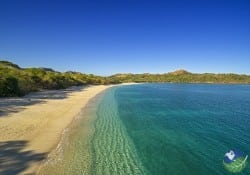 Playa Conchal is truly one of the most beautiful beaches in the world. It is famous for its white-shelled beach and brilliant, crystal clear waters. Conchal is a great place to get a massage on the beach, go jet skiing, sailing or horseback riding. Playa Conchal is also home to some of the most exclusive and luxurious resorts in Costa Rica including the
Playa Conchal is truly one of the most beautiful beaches in the world. It is famous for its white-shelled beach and brilliant, crystal clear waters. Conchal is a great place to get a massage on the beach, go jet skiing, sailing or horseback riding. Playa Conchal is also home to some of the most exclusive and luxurious resorts in Costa Rica including the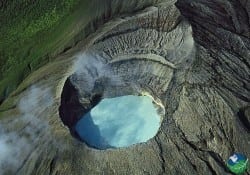 If you’re ready for an adventure, be sure to visit Rincon de la Vieja, a famous volcano and national park one hour from Liberia. Take advantage of one of the many combo tours, which allow you to zip line, repel down waterfalls, hike and relax in thermal hot springs–all in one day! The area is also on the UNESCO World Heritage list because it is so ecologically diverse. Hike or ride horseback through the national park to see jaw-dropping Costa Rican flora and fauna.
If you’re ready for an adventure, be sure to visit Rincon de la Vieja, a famous volcano and national park one hour from Liberia. Take advantage of one of the many combo tours, which allow you to zip line, repel down waterfalls, hike and relax in thermal hot springs–all in one day! The area is also on the UNESCO World Heritage list because it is so ecologically diverse. Hike or ride horseback through the national park to see jaw-dropping Costa Rican flora and fauna. Eco-tourists and birders will fall in love with Monteverde National Park. Monteverde is home the famous Cloud Forests of Costa Rica, which have more species of trees than the USA and more than 400 species of birds. During the day, the foggy and mysterious Cloud Forests will leave you in awe as you hike through it, or over it on Hanging Bridges. At night you can take a guided hike to see the diverse range of wildlife lurking in the darkness. Monteverde is also the best place for an exciting canopy tour.
Eco-tourists and birders will fall in love with Monteverde National Park. Monteverde is home the famous Cloud Forests of Costa Rica, which have more species of trees than the USA and more than 400 species of birds. During the day, the foggy and mysterious Cloud Forests will leave you in awe as you hike through it, or over it on Hanging Bridges. At night you can take a guided hike to see the diverse range of wildlife lurking in the darkness. Monteverde is also the best place for an exciting canopy tour.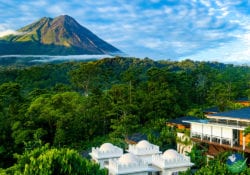 The Arenal Volcano Costa Rica’s most famous volcano. It towers impressively over the small town of
The Arenal Volcano Costa Rica’s most famous volcano. It towers impressively over the small town of  The
The 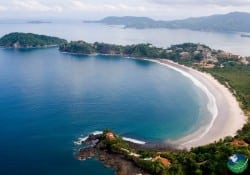 The Costa Rica Guanacaste region region is also hone to the
The Costa Rica Guanacaste region region is also hone to the 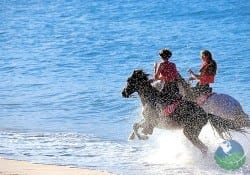 Due to its size and location, Guanacaste in Costa Rica has tours available for everyone. ATV, canopy, mountain biking, canyoning and white water rafting are available for adrenaline seekers. Sport fishing is rampant throughout the province, with half and full-day tours. Those looking to relax can find hot springs, yoga resorts, sunset cruises and excellent bird watching tours.
Due to its size and location, Guanacaste in Costa Rica has tours available for everyone. ATV, canopy, mountain biking, canyoning and white water rafting are available for adrenaline seekers. Sport fishing is rampant throughout the province, with half and full-day tours. Those looking to relax can find hot springs, yoga resorts, sunset cruises and excellent bird watching tours.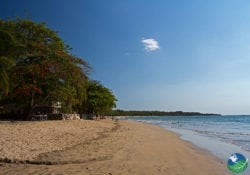 From November to April you’ll find dry, tropical weather, perfect for beach hopping and hiking. Daily temperatures average around 70 degrees Fahrenheit. The rainy season, or “green season” is from May to November. During the rainy season you’ll likely experience short to medium showers during the afternoon. However don’t let the rain scare you away! The vegetation in Guanacaste in Costa Rica blossoms during the wet months and the surrounding mountains come alive with color.
From November to April you’ll find dry, tropical weather, perfect for beach hopping and hiking. Daily temperatures average around 70 degrees Fahrenheit. The rainy season, or “green season” is from May to November. During the rainy season you’ll likely experience short to medium showers during the afternoon. However don’t let the rain scare you away! The vegetation in Guanacaste in Costa Rica blossoms during the wet months and the surrounding mountains come alive with color.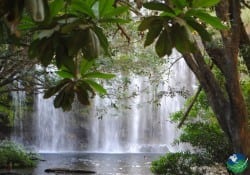 Due to Guanacaste’s dryer climate, instead of a typical rainforest, you’ll find dry tropical forests in Guanacaste, Costa Rica. The trees are mostly deciduous trees which lose their leaves during the dry season to preserve water. The dry forests are still incredibly biodiverse and you’ll find a huge variety of plants and wildlife in Guanacaste including monkeys, parrots and pumas.
Due to Guanacaste’s dryer climate, instead of a typical rainforest, you’ll find dry tropical forests in Guanacaste, Costa Rica. The trees are mostly deciduous trees which lose their leaves during the dry season to preserve water. The dry forests are still incredibly biodiverse and you’ll find a huge variety of plants and wildlife in Guanacaste including monkeys, parrots and pumas.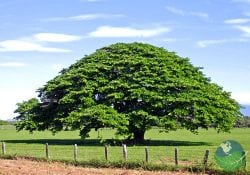 On July 25th, 1824 the people of Guanacaste voted to become part of Costa Rica and Guanacaste was annexed into Costa Rica from Nicaragua. July 25th is now “Guanacaste Day” and is celebrated every year. Guanacaste was named from the word quahnacaztlan, the indigenous word for the national tree of Costa Rica, which is found in Guanacaste. The 5,932 square mile region is cattle country and as you explore small towns you’ll find an almost romantic cowboy culture. It’s not unusual to see great herds of cows, rodeos and cowboys throughout the province.
On July 25th, 1824 the people of Guanacaste voted to become part of Costa Rica and Guanacaste was annexed into Costa Rica from Nicaragua. July 25th is now “Guanacaste Day” and is celebrated every year. Guanacaste was named from the word quahnacaztlan, the indigenous word for the national tree of Costa Rica, which is found in Guanacaste. The 5,932 square mile region is cattle country and as you explore small towns you’ll find an almost romantic cowboy culture. It’s not unusual to see great herds of cows, rodeos and cowboys throughout the province. You’ll know you’re in Guanacaste when you spot the famous Elephant Ear Tree (Guanacaste Tree) everywhere you go. The Elephant Ear Tree was declared the Costa Rica national tree on August 31st, 1959. It is called the Elephant Ear Tree because of the interesting shape of the seeds. The famous Guanacaste Tree’s spherical crown provides shade to animals and coffee plantation workers, improves soil fertility and offers water-resistant wood. You’ll find a lot of furniture made out of the valuable wood. The seeds are also edible and used to feed cattle.
You’ll know you’re in Guanacaste when you spot the famous Elephant Ear Tree (Guanacaste Tree) everywhere you go. The Elephant Ear Tree was declared the Costa Rica national tree on August 31st, 1959. It is called the Elephant Ear Tree because of the interesting shape of the seeds. The famous Guanacaste Tree’s spherical crown provides shade to animals and coffee plantation workers, improves soil fertility and offers water-resistant wood. You’ll find a lot of furniture made out of the valuable wood. The seeds are also edible and used to feed cattle. Thanks to the 2012 expansion of the the Daniel Oduber International Airport in
Thanks to the 2012 expansion of the the Daniel Oduber International Airport in 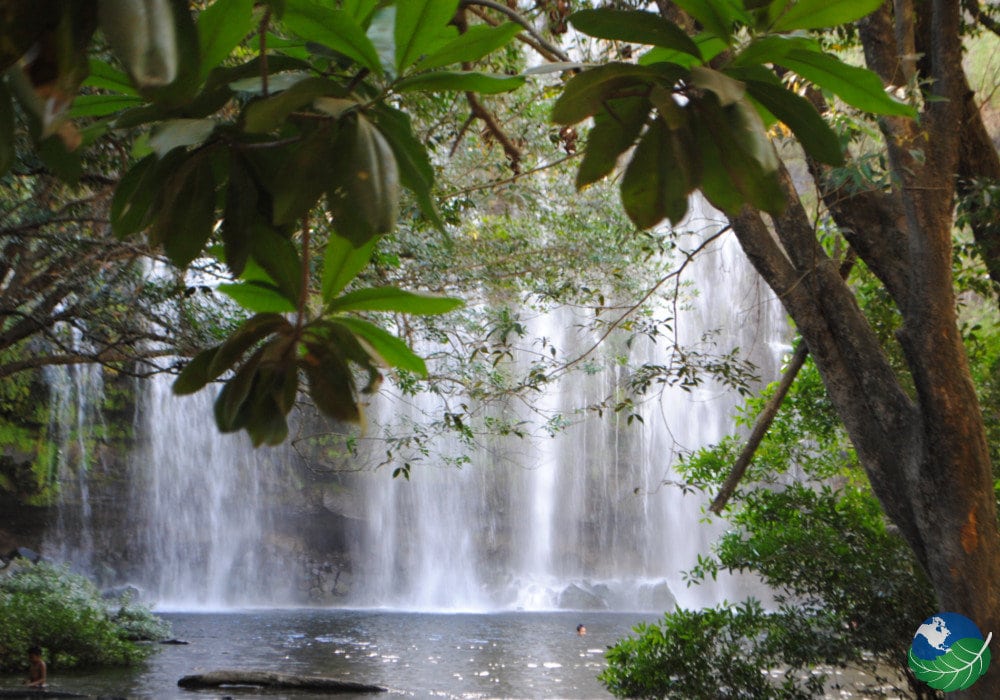
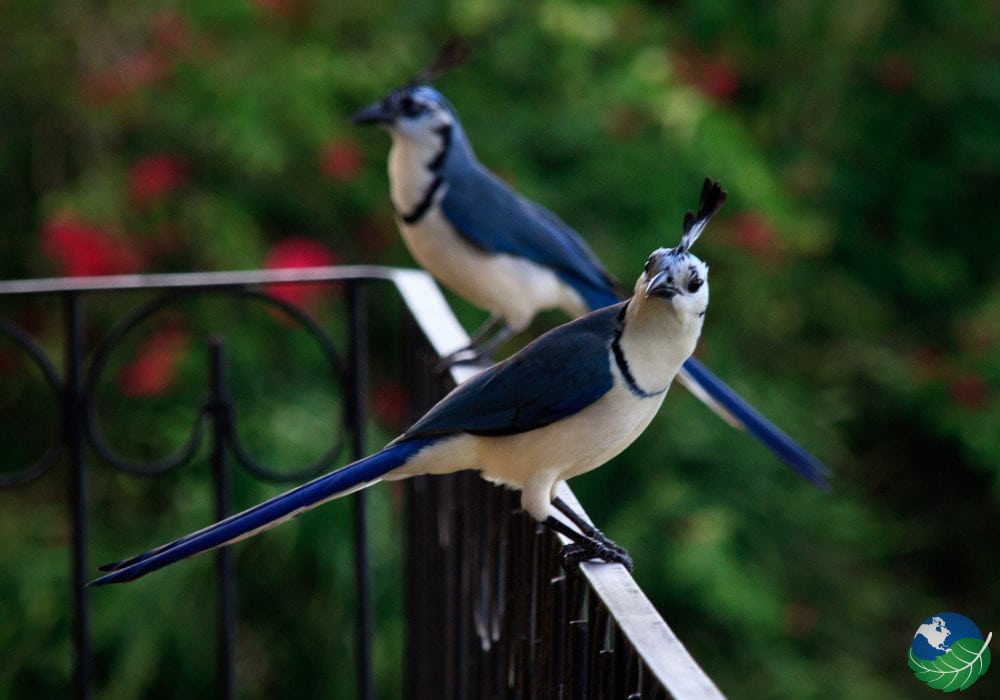

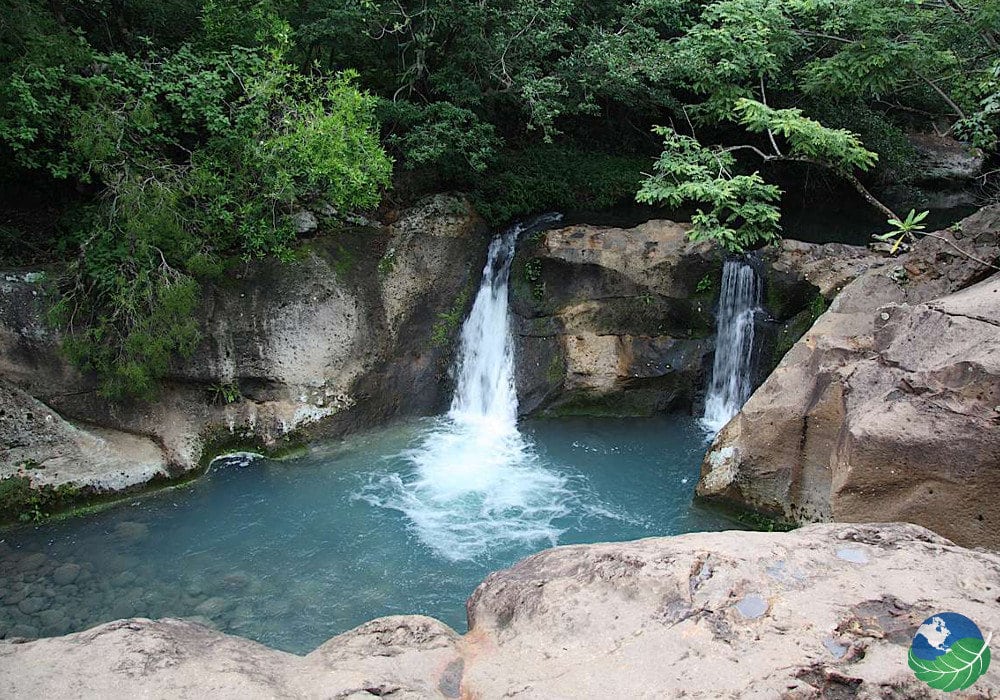
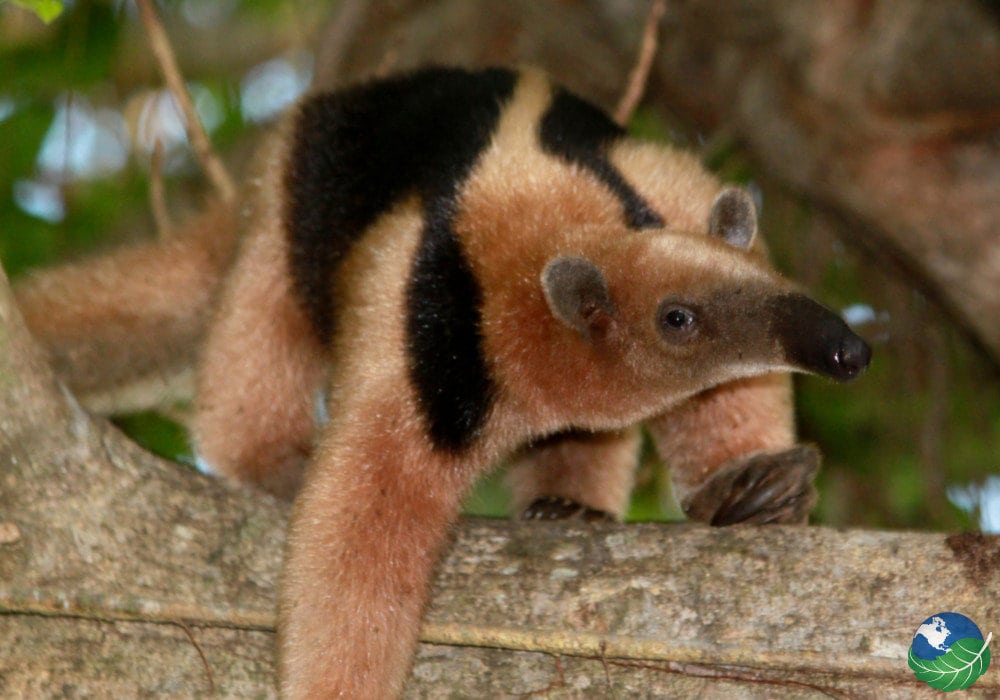
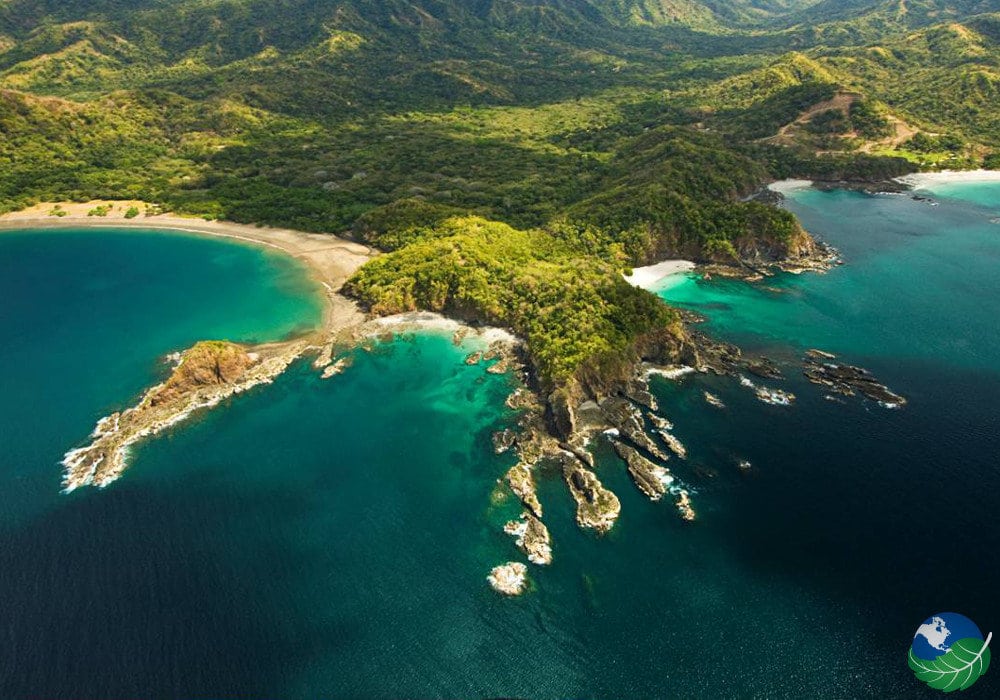



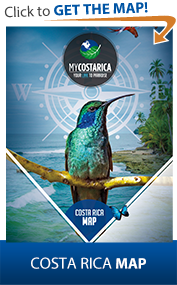
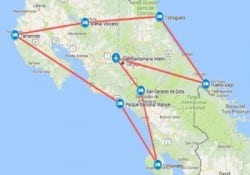
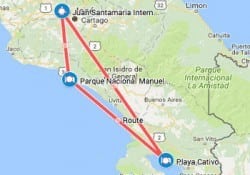
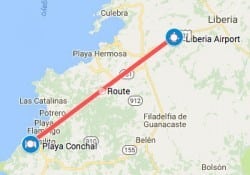

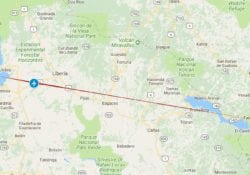
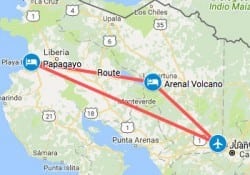

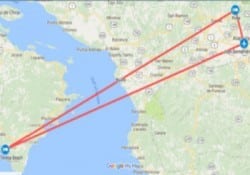
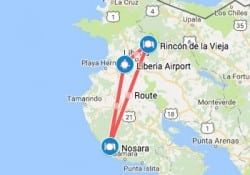

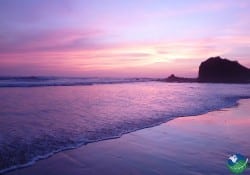
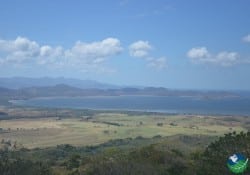

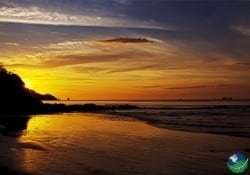

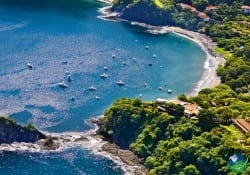
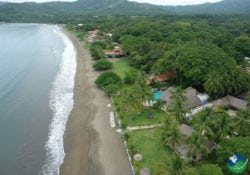

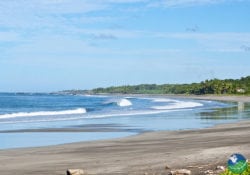
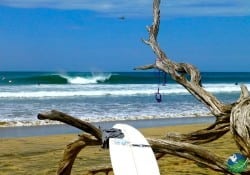


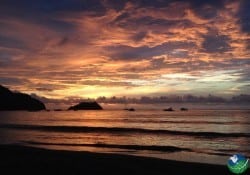

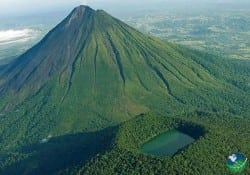
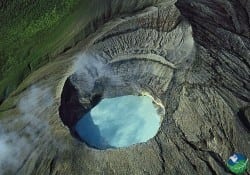


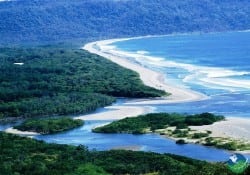
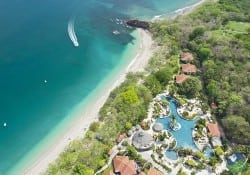
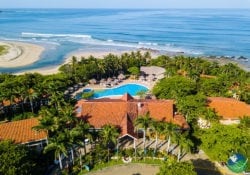
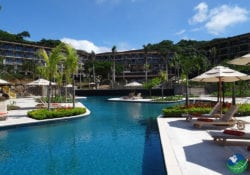
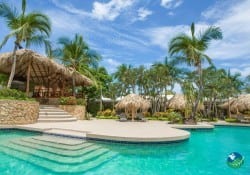






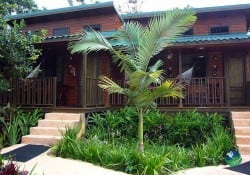
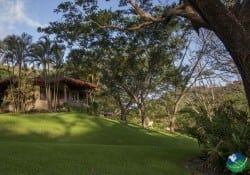



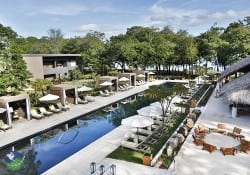
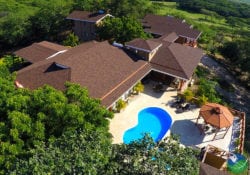
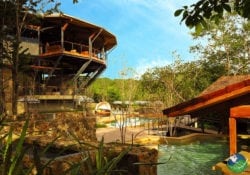



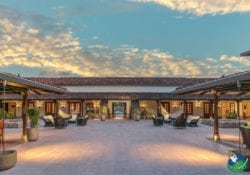

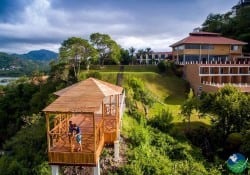
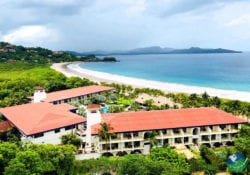


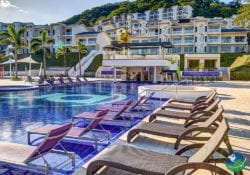
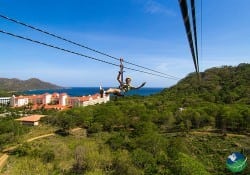
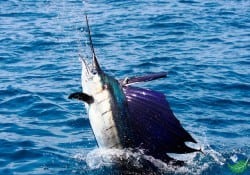
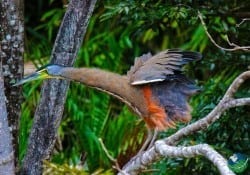

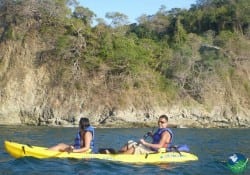










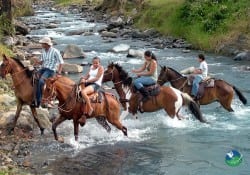
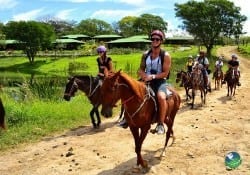
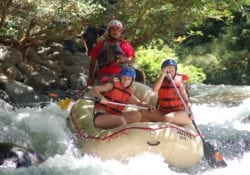


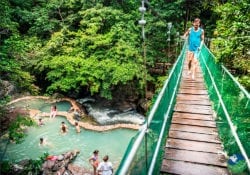
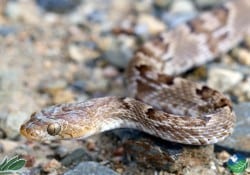

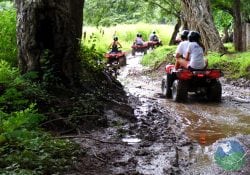



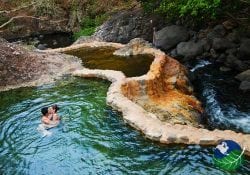
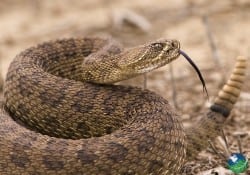






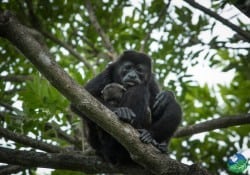
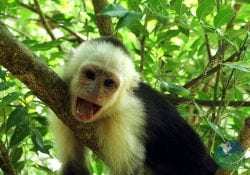


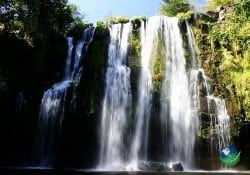









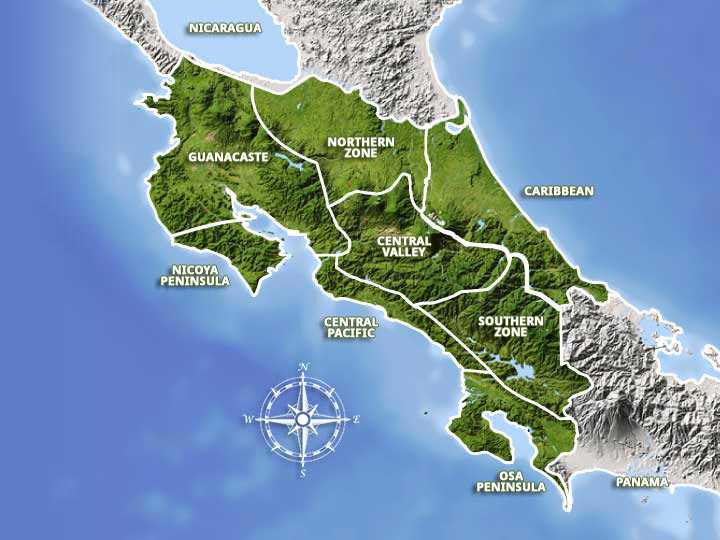







Follow Us